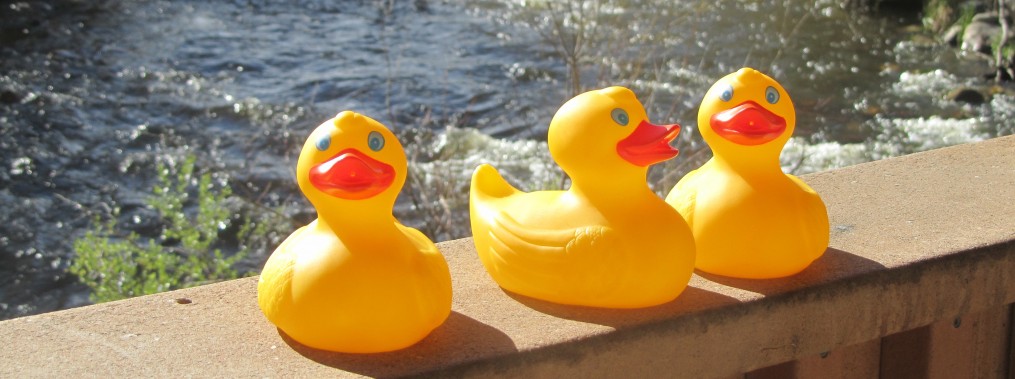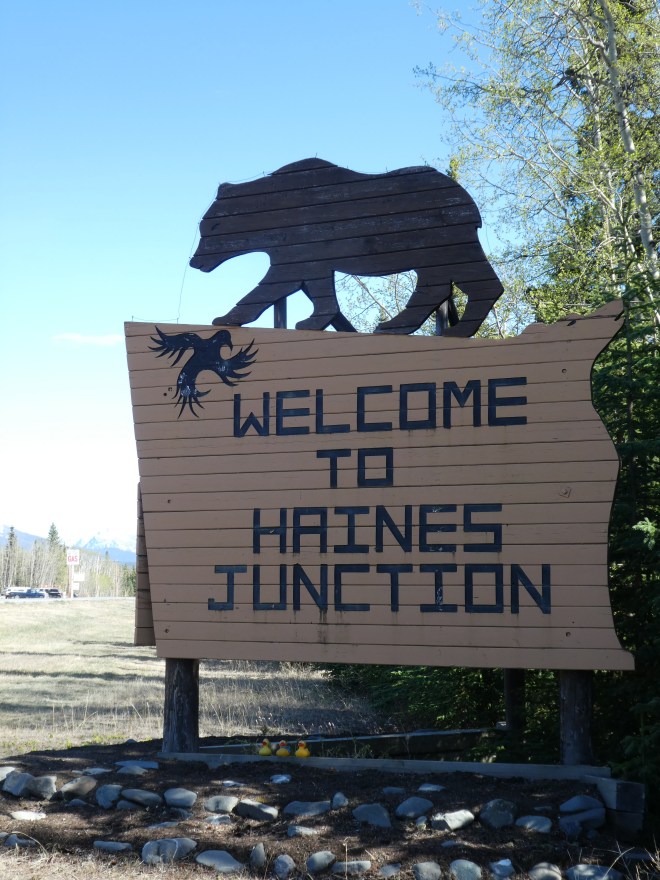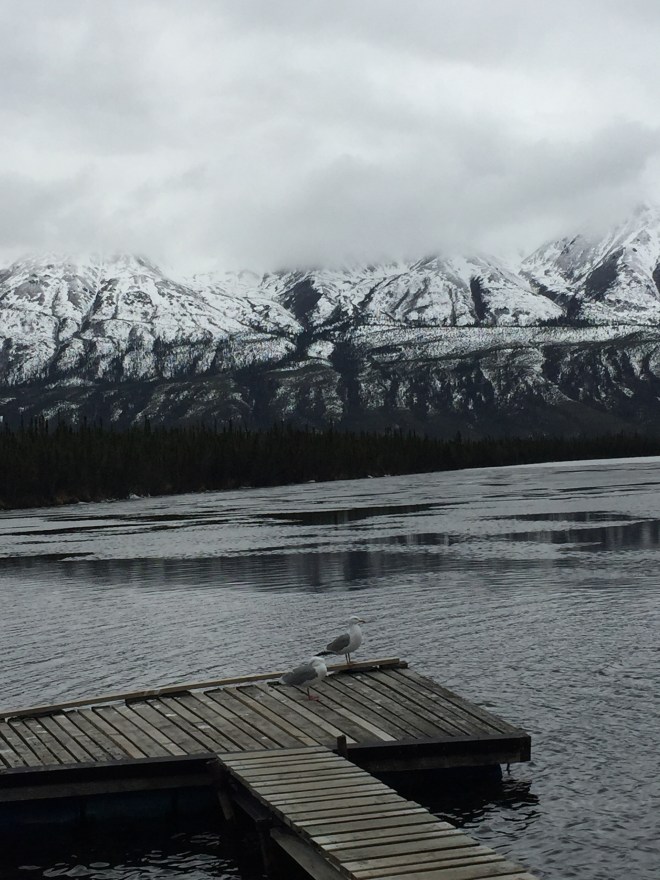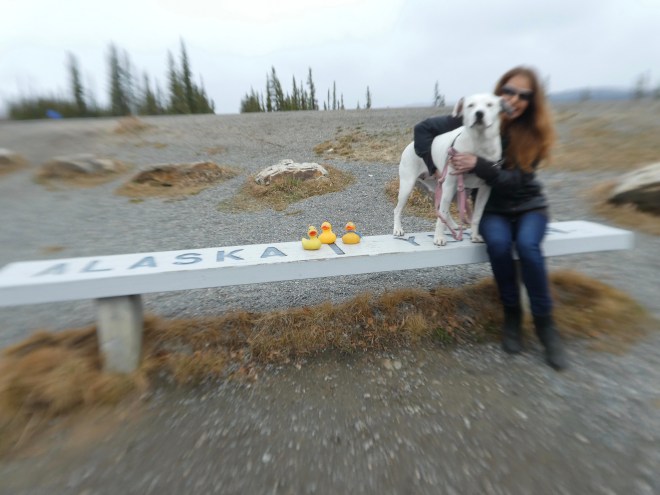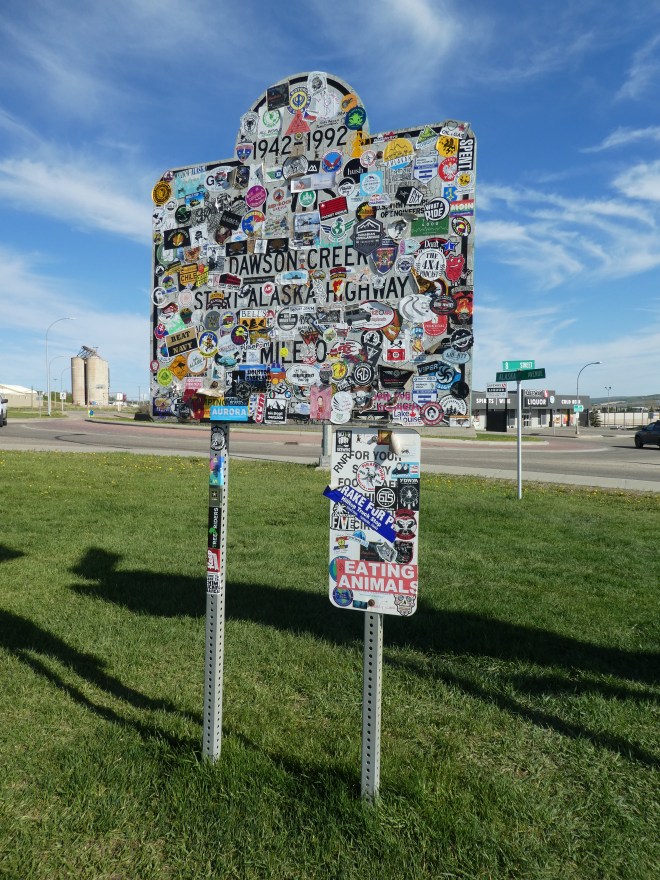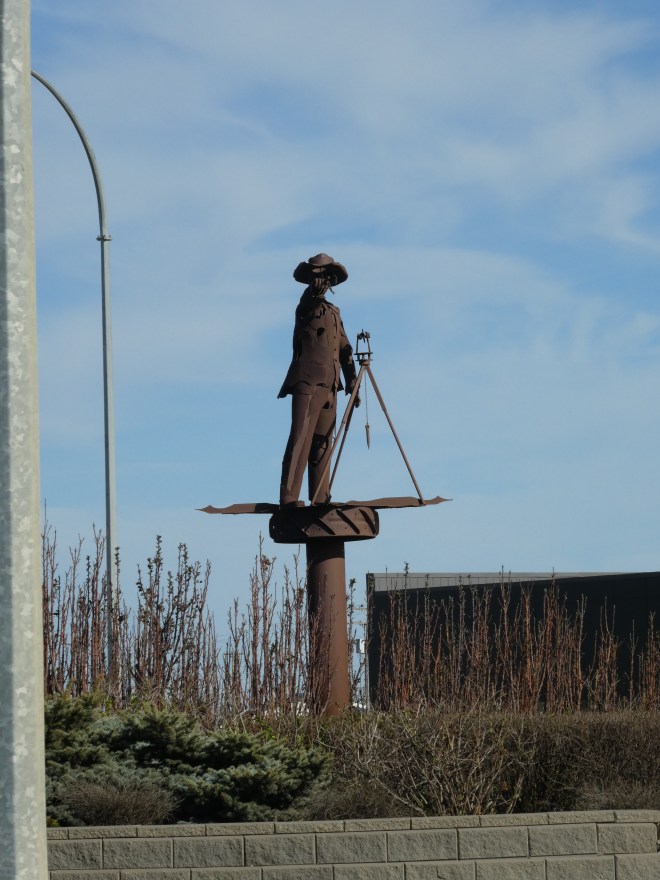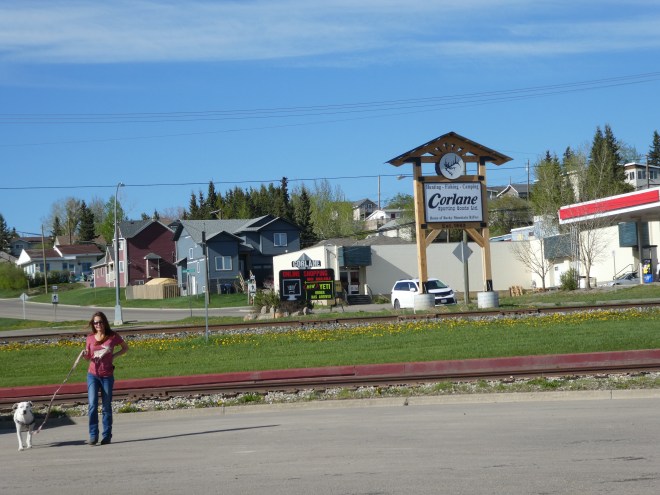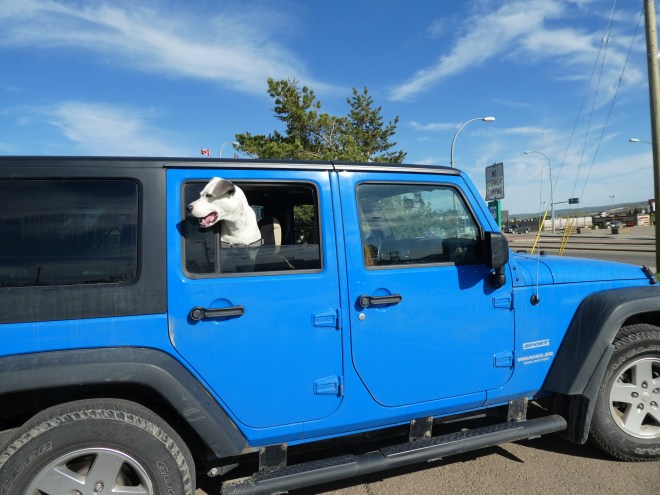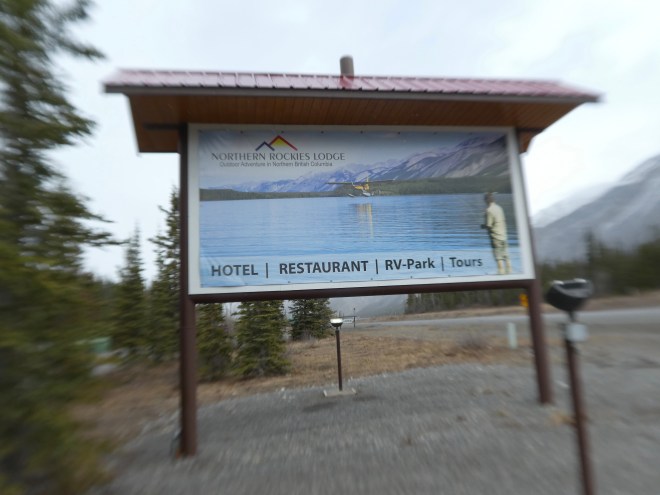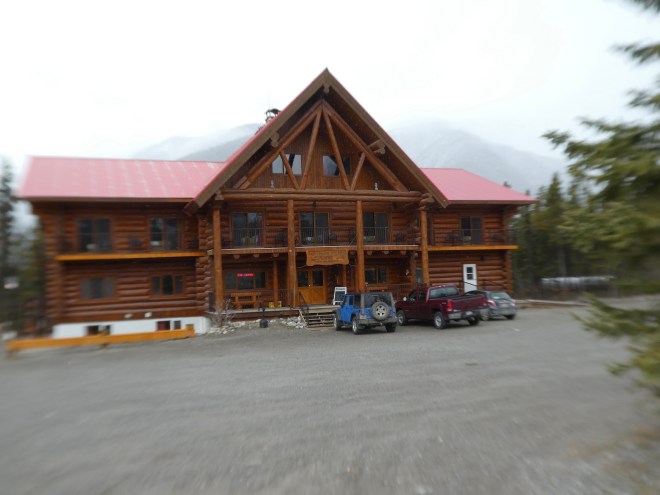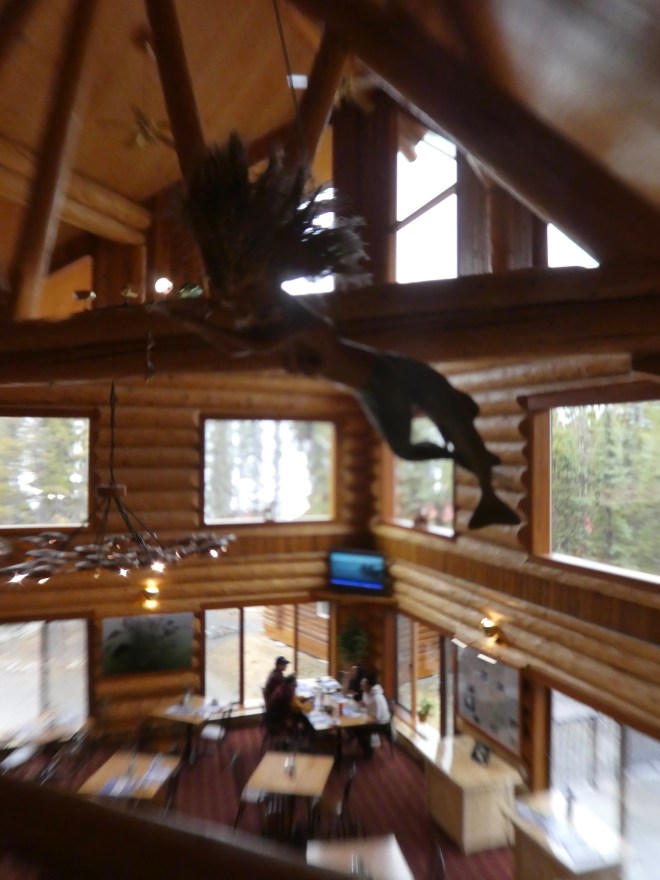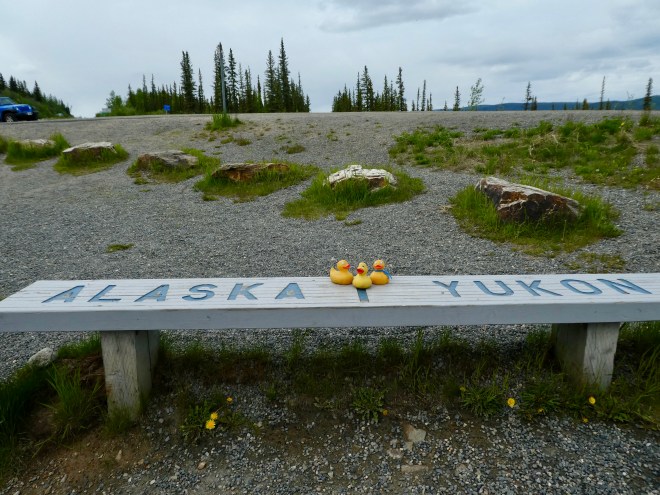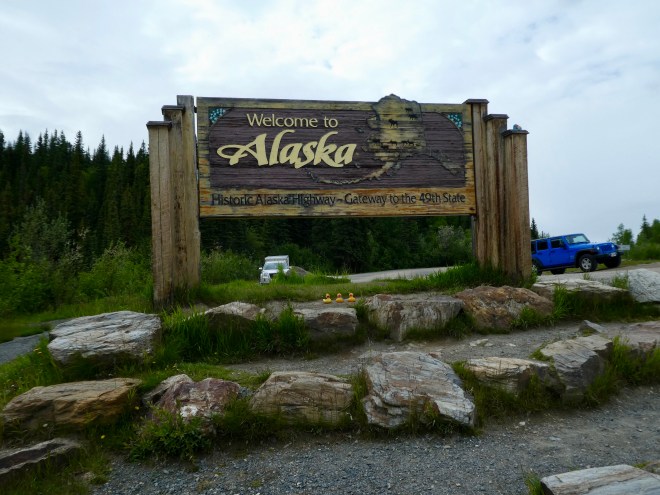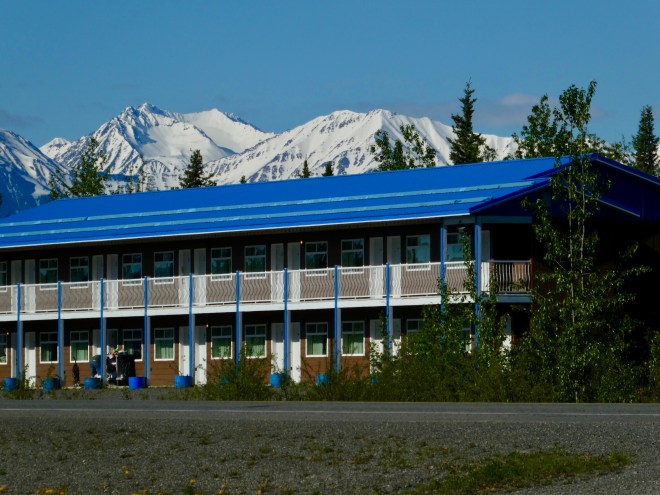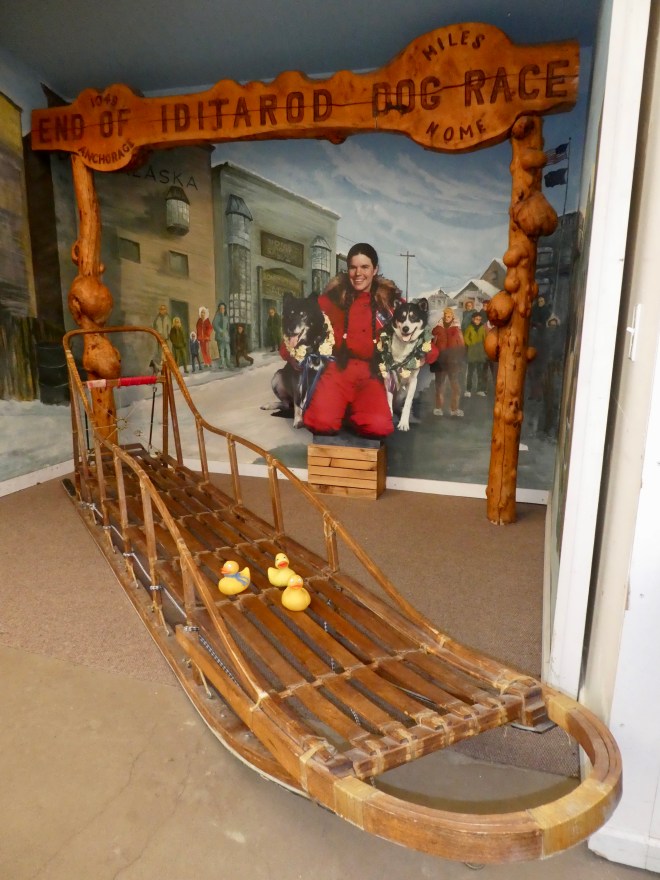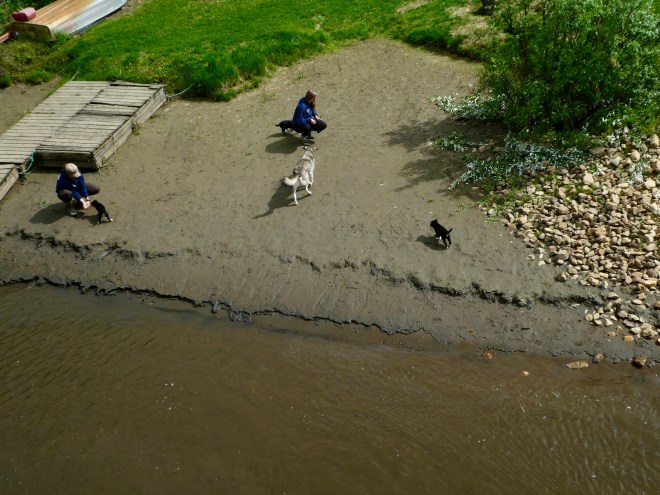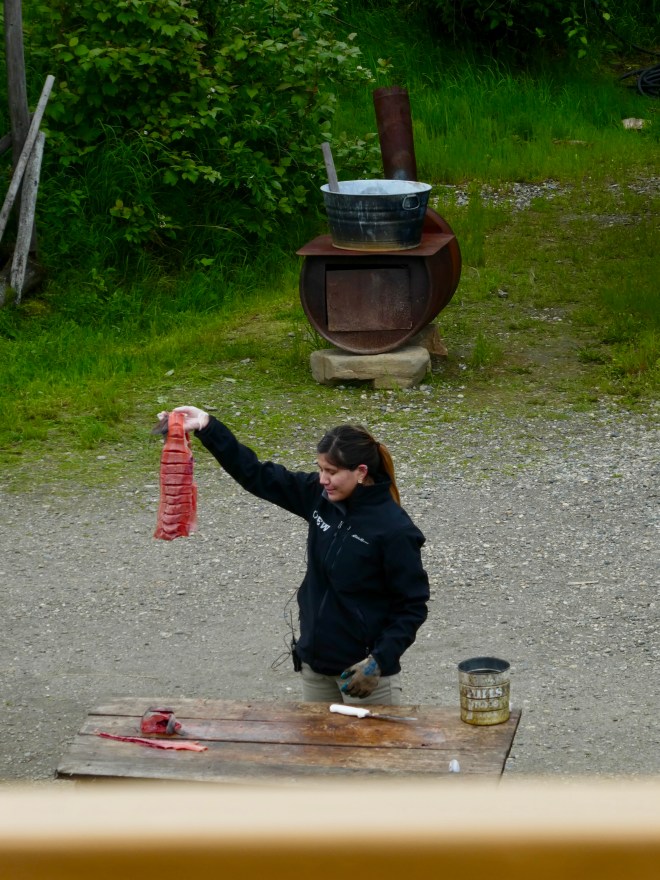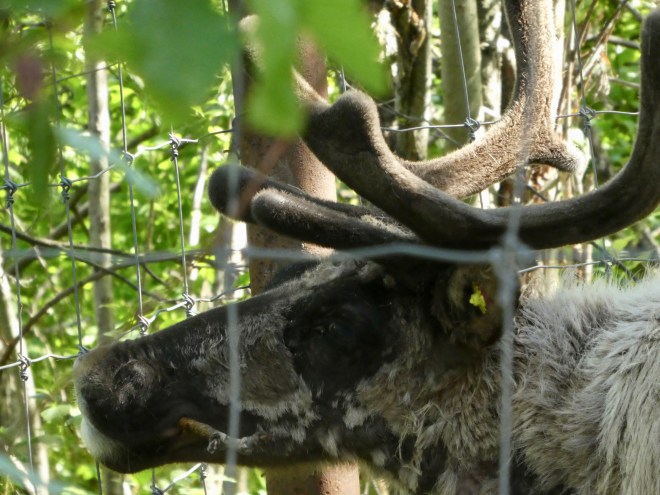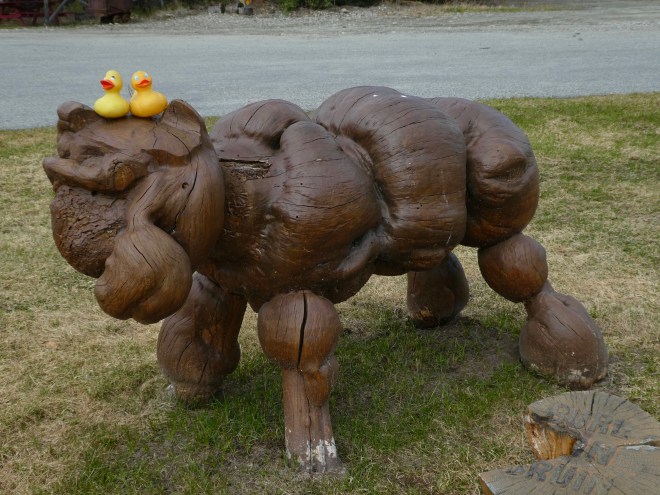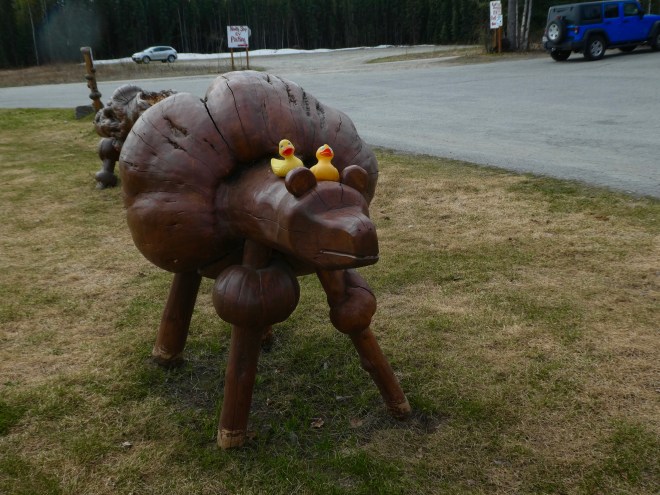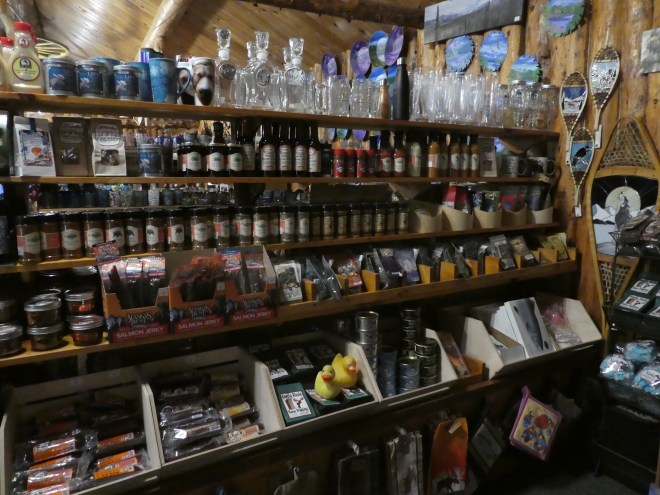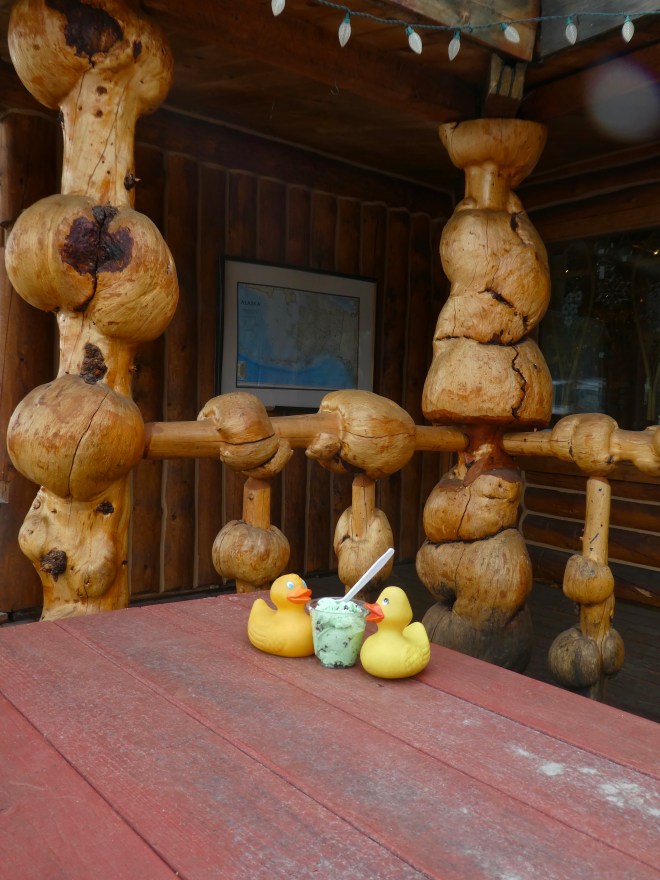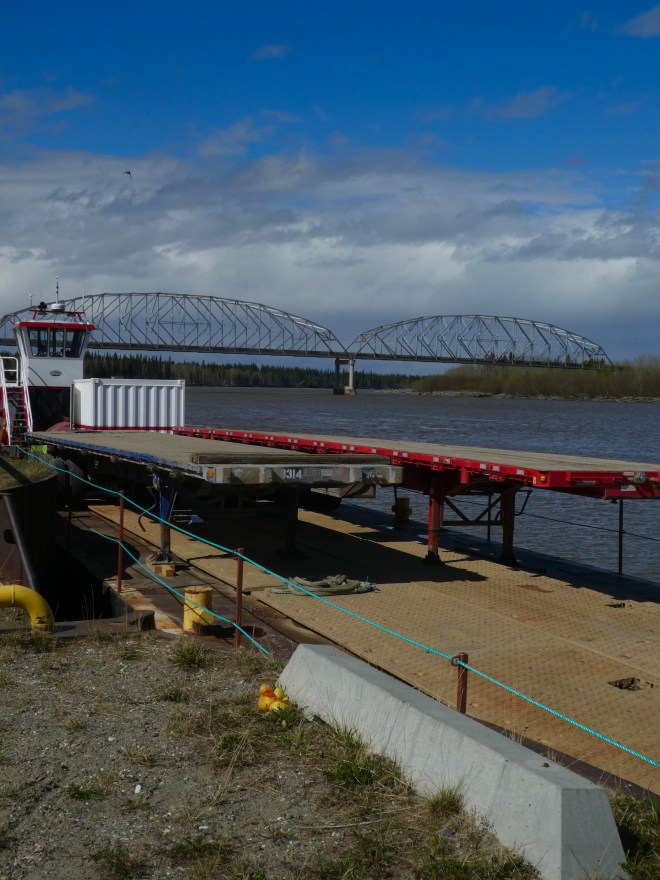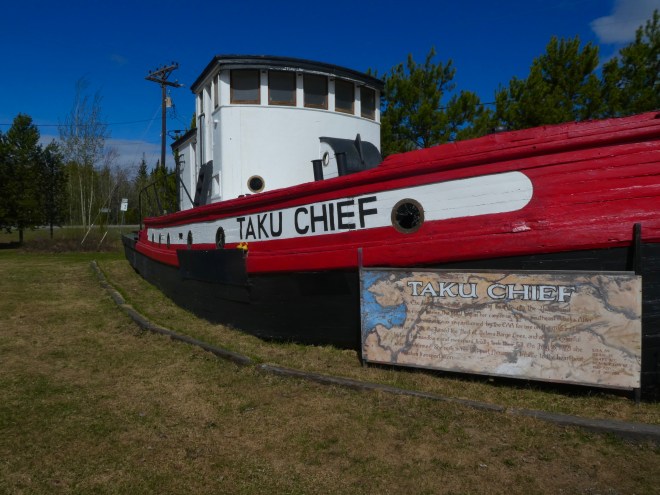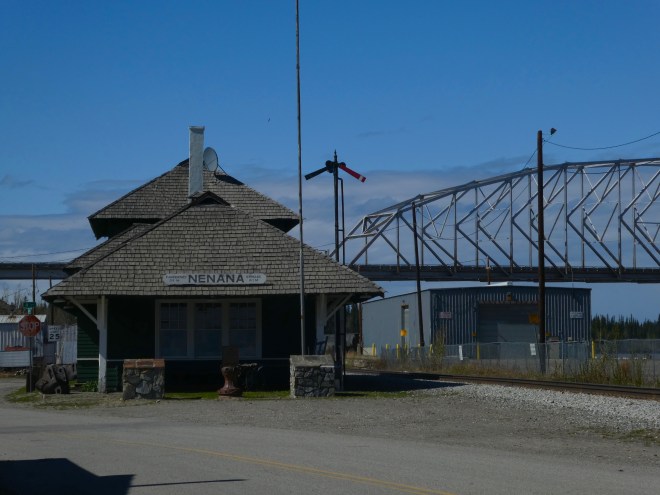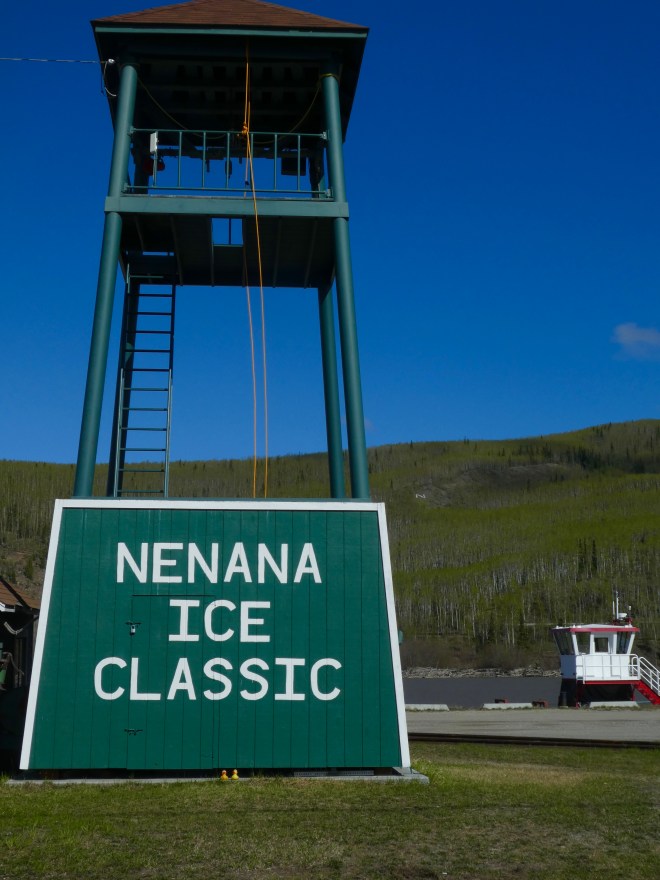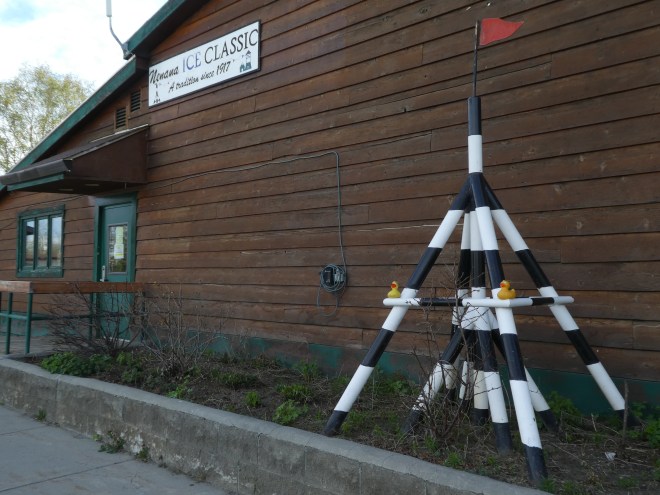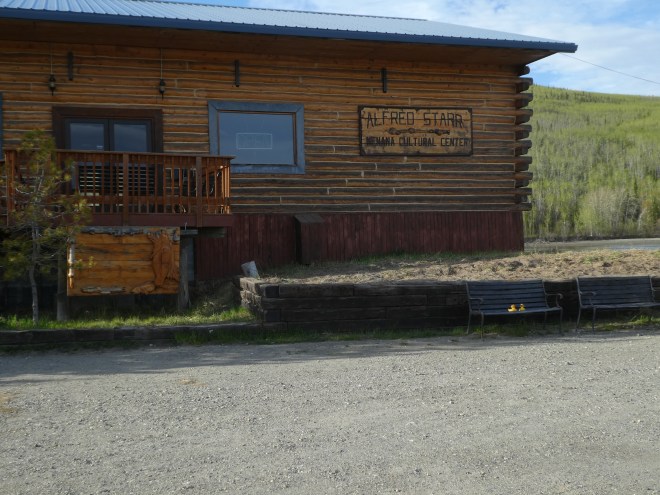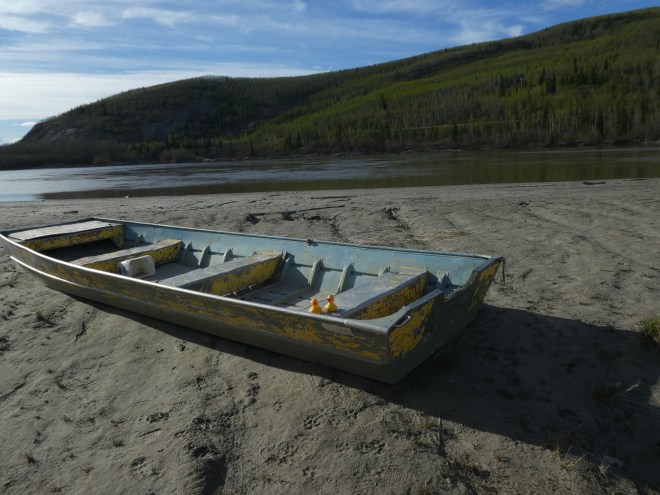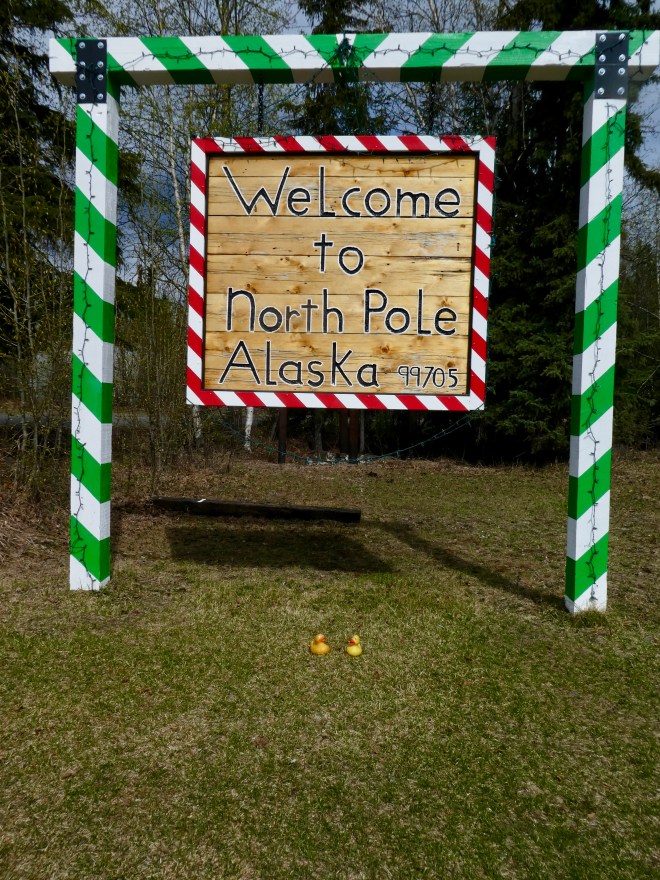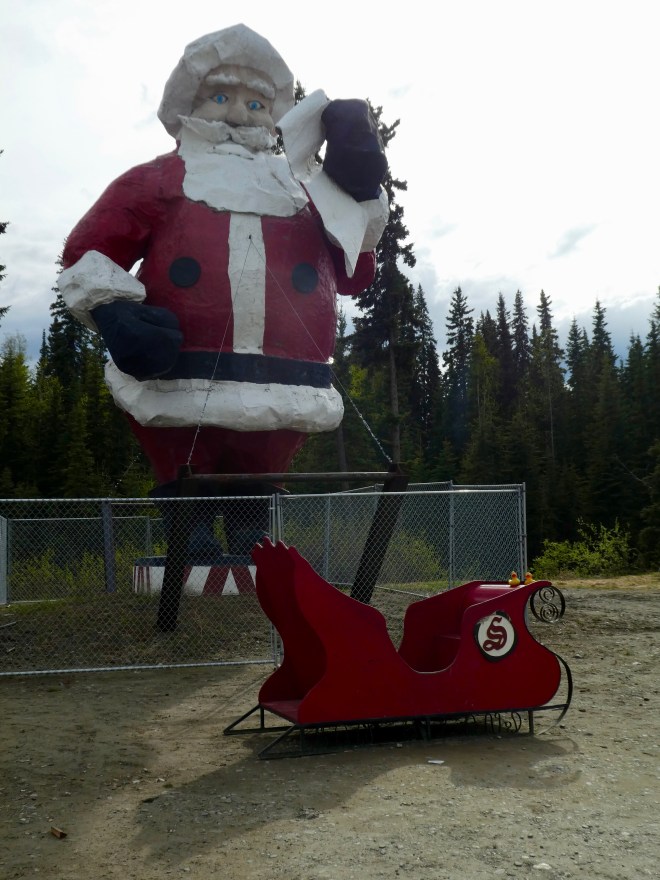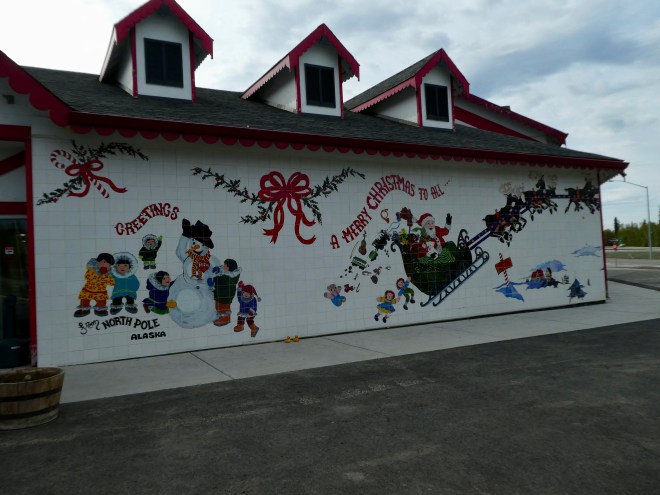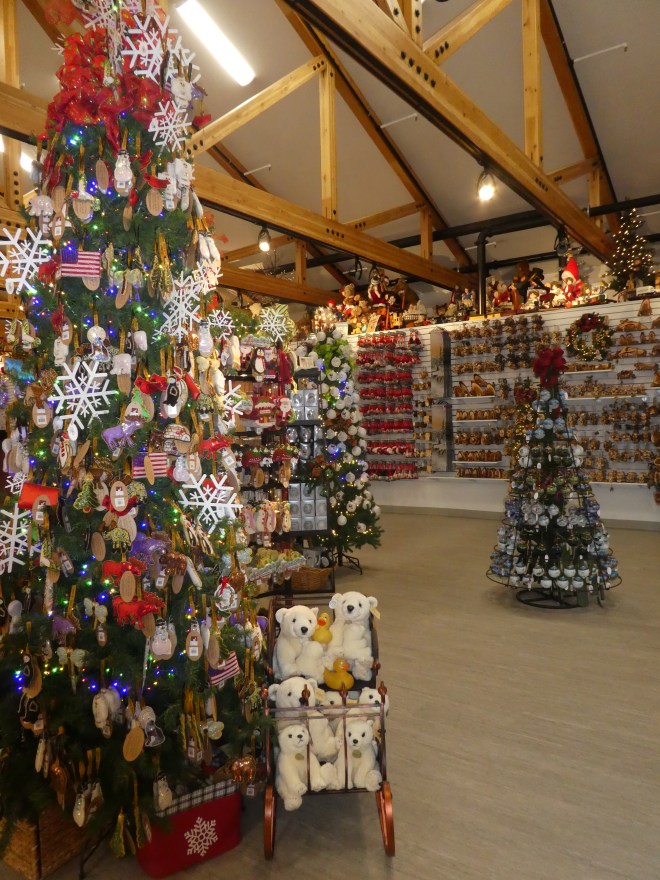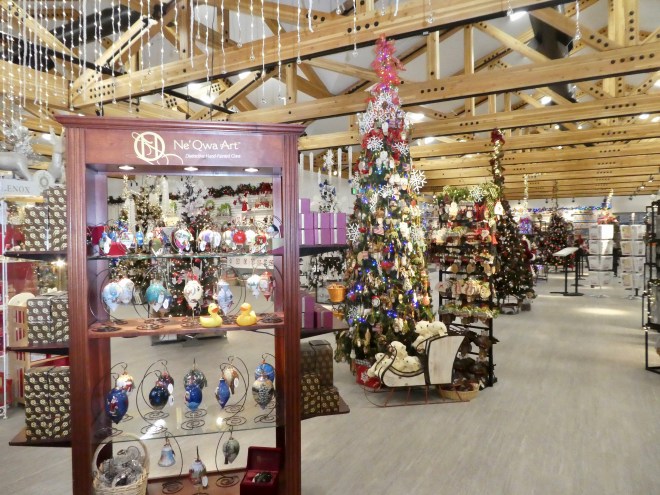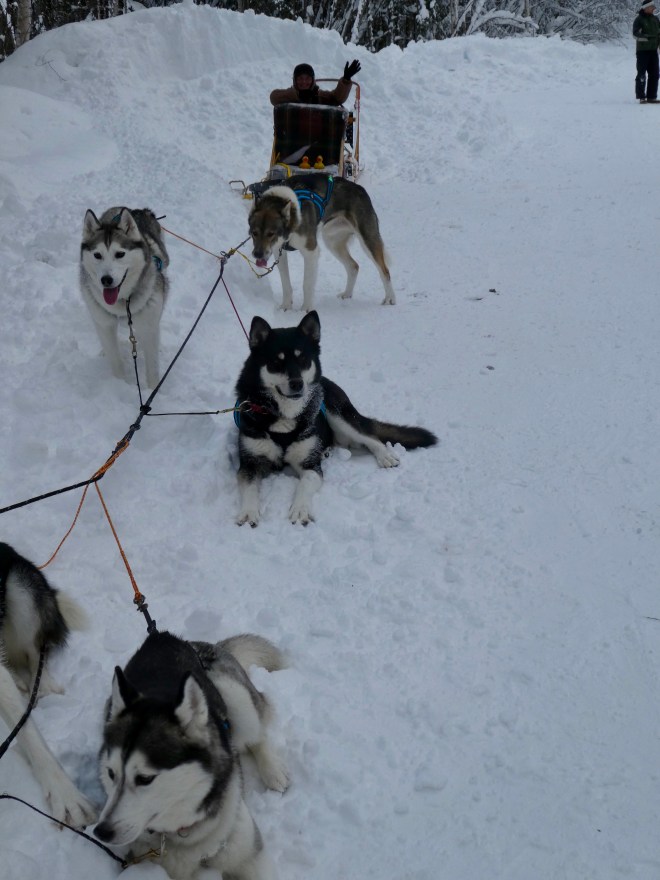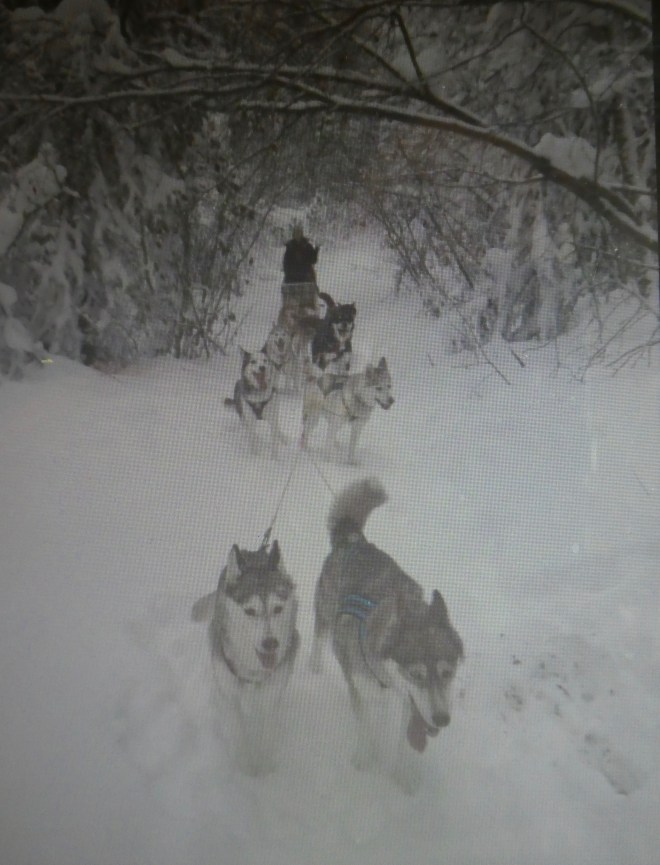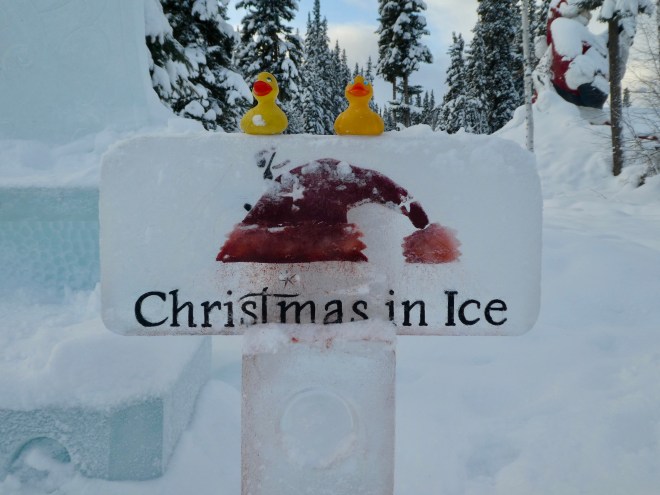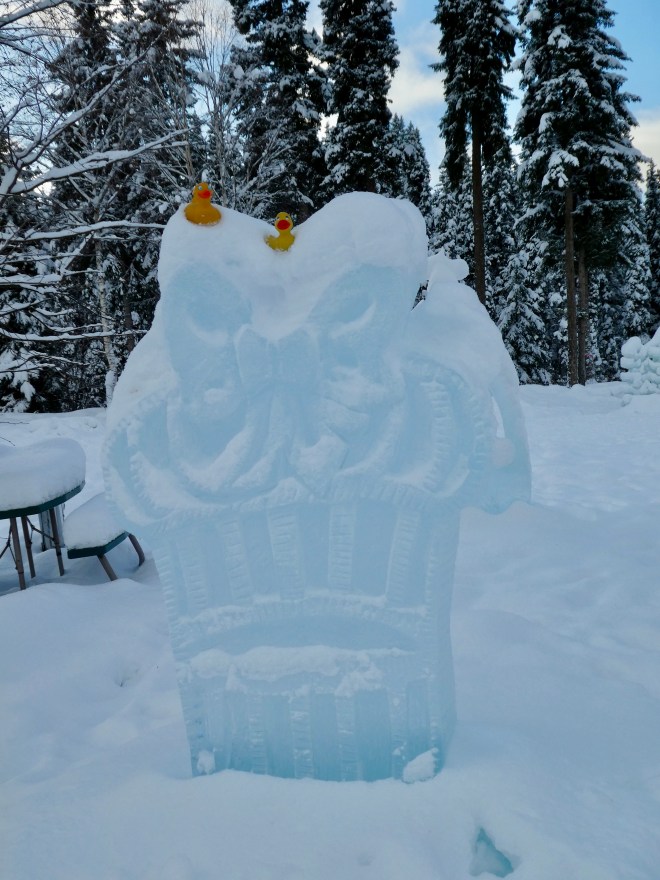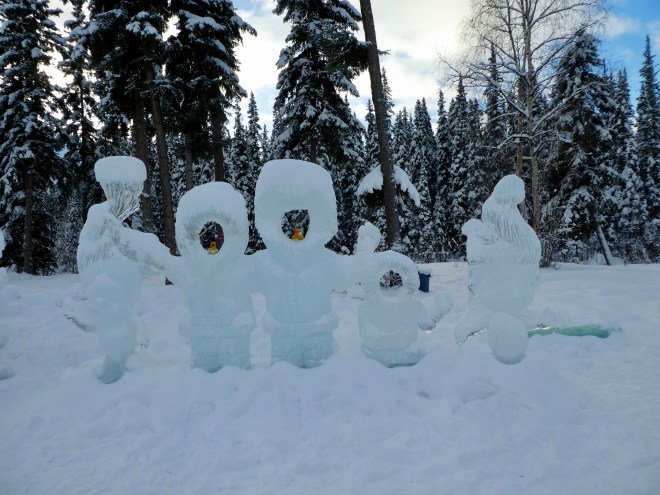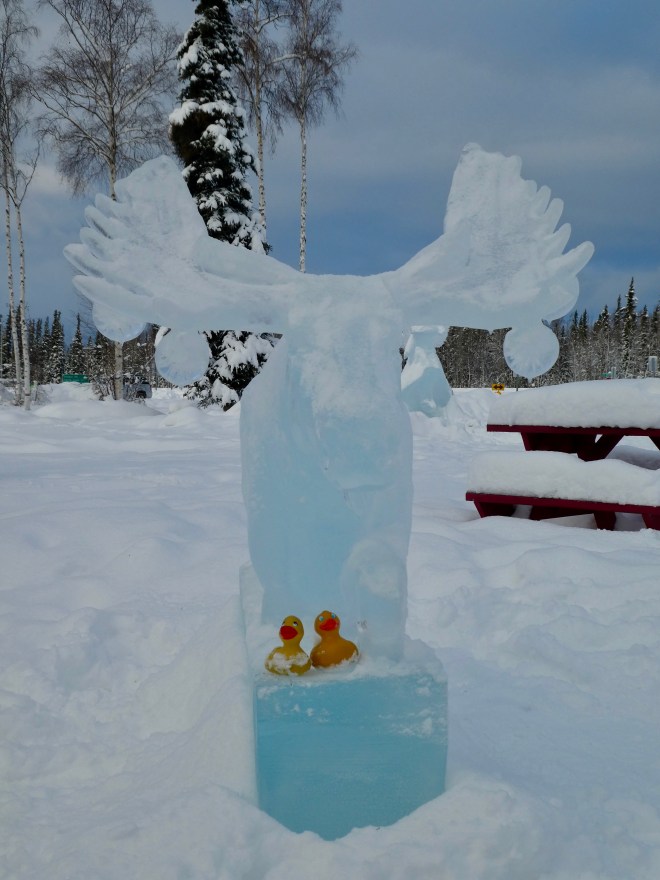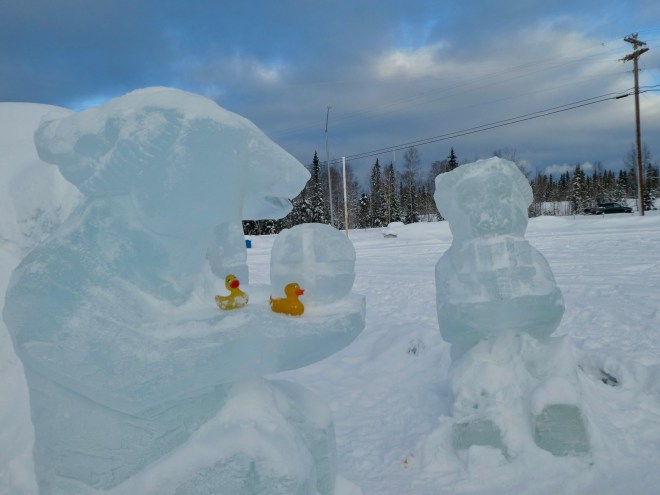Yesterday’s snow and icy roads, the worst of the trip has ended. We arrived at Haines Junction, in the Canadian Yukon.
And yes, you can drive to the Alaskan port city of Haines from here. But we did not. We are trying to get to Fairbanks or North Pole, Alaska to hire a new realtor. Our motel in Haines Junction was very comfortable and had a good bar and restaurant nearby.
So we were all happy. We ordered our dinner and ate in our rooms. We were exhausted. Refreshed after a good night’s sleep, driving north, we met a new friend.
This Canadian grizzly bear was too busy grazing to pay much attention to us, but we sure admired him. That bump on his back is typical of grizzly bears, or so says our guidebook. They can be ferious, but he looks so sweet and hugable. This partially frozen lake caught our attention.
We love to see the winter landscape. We just don’t love the cold. Driving past Canadian customs, we have arrived in Alaska, USA.  There are several monuments and signs here. The Welcome to Alaska. Looking the other direction, the Welcome to the Yukon, and this friendship bench.
There are several monuments and signs here. The Welcome to Alaska. Looking the other direction, the Welcome to the Yukon, and this friendship bench.
Canada and the United States have been friends for years, so this bench is a nice place to pause and enjoy the view. The International Boundary Post shows the actual border, marked by the suveyors.  Before the Alaska Highway, the borders were not so clearly marked. We quicky cleared US customs and we continued north toward Delta Junction.
Before the Alaska Highway, the borders were not so clearly marked. We quicky cleared US customs and we continued north toward Delta Junction.
This milepost in Delta Junction marks the official end of the Alaska Highway. From here there is a main road heading south to Anchorage and Valdez. Valdez is the end of the Alaska Pipeline, which carries oil from the fields of Prudhoe Bay on the Arctic Ocean to Port Valdez on the east side of Prince William Sound. Here ships wait to carry crude oil into the Pacific Ocean and to various world ports. Also at Delta Junction, you can drive on the Richardson Highway and go north to Fairbanks. That is the route we drove. We were in Delta Junction the first week of May and the Visitor’s Center was not yet open. Many businesses along our route are only open during the warmer months. At the Delta Junction Visitor’s Center they have lots of information signs outside. And this statue of a giant mosquito.  Alaska does have giant mosquitos. But since the center is not yet open, this mosquito is not yet in its best form. This photo from last year shows what the mosquito will look like soon.
Alaska does have giant mosquitos. But since the center is not yet open, this mosquito is not yet in its best form. This photo from last year shows what the mosquito will look like soon.
Well, we are only hours away from our next hotel in Fairbanks.
Heading down the road, we will reach our Fairbanks destination tonight.
